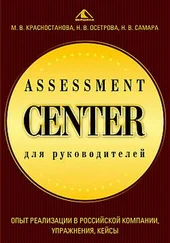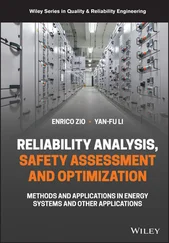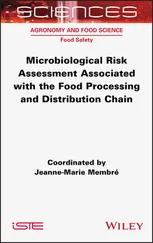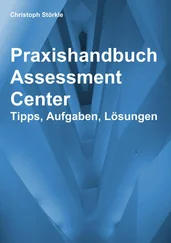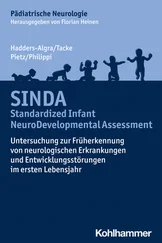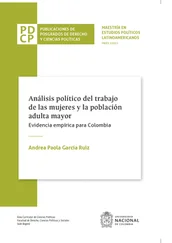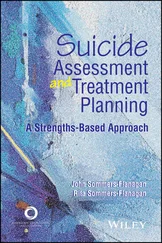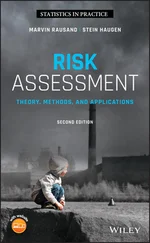Georgi Popov - Risk Assessment
Здесь есть возможность читать онлайн «Georgi Popov - Risk Assessment» — ознакомительный отрывок электронной книги совершенно бесплатно, а после прочтения отрывка купить полную версию. В некоторых случаях можно слушать аудио, скачать через торрент в формате fb2 и присутствует краткое содержание. Жанр: unrecognised, на английском языке. Описание произведения, (предисловие) а так же отзывы посетителей доступны на портале библиотеки ЛибКат.
- Название:Risk Assessment
- Автор:
- Жанр:
- Год:неизвестен
- ISBN:нет данных
- Рейтинг книги:4 / 5. Голосов: 1
-
Избранное:Добавить в избранное
- Отзывы:
-
Ваша оценка:
- 80
- 1
- 2
- 3
- 4
- 5
Risk Assessment: краткое содержание, описание и аннотация
Предлагаем к чтению аннотацию, описание, краткое содержание или предисловие (зависит от того, что написал сам автор книги «Risk Assessment»). Если вы не нашли необходимую информацию о книге — напишите в комментариях, мы постараемся отыскать её.
Explore the fundamentals of risk assessment with references to the latest standards, methodologies, and approaches Risk Assessment: A Practical Guide to Assessing Operational Risks
Risk Assessment: A Practical Guide to Assessing Operational Risks
Risk Assessment — читать онлайн ознакомительный отрывок
Ниже представлен текст книги, разбитый по страницам. Система сохранения места последней прочитанной страницы, позволяет с удобством читать онлайн бесплатно книгу «Risk Assessment», без необходимости каждый раз заново искать на чём Вы остановились. Поставьте закладку, и сможете в любой момент перейти на страницу, на которой закончили чтение.
Интервал:
Закладка:
Worst Conceivable Risk:
The worst conceivable consequence from an incident that could occur, but probably will not occur, within the lifetime of the system. (ANSI/ASSP Z590.3‐2011(R2016))
Worst Credible Consequence:
The worst credible consequence from an incident that has the potential to occur within the lifetime of the system. (ANSI/ASSP Z590.3‐2011(R2016))
2.14 Summary
Safety, health, and environmental professionals should develop an understanding of standards and guidelines prescribing operational risk assessment for organizations, and their importance in shaping the SH&E professional’s role in occupational safety and health. The key terms and definitions for operational risk assessment and management reviewed in this chapter are fundamental and should be in every SH&E professional’s vocabulary. As the operational risk profession matures, reference to these standards and future trends in standard development regarding the practice of risk assessment will be required.
Review Questions
1 1 Explain the deference between a consensus standard and a compliance standard. Provide examples of each.
2 2 Provide five examples of where OSHA standards require hazard determination and analysis.
3 3 Summarize the main requirements of operational risk management systems and list three standards for such systems.
4 4 List the name and purpose of the ANSI standard series for risk management.
5 5 List the steps of a hazard analysis and risk assessment as outlined in ANSI Z590.3 Prevention through Design standard.
6 6 Which ANSI standard series addresses machine safety and provide the primary standard for machine risk assessment.
7 7 Provide examples that can be found in the workplace for acceptable risk level.
References
1 ANSI/ASSP Z10.0‐2019 (2019). Occupational Health and Safety Management Systems. Park Ridge, IL: American Society of Safety Professionals.
2 ANSI/ASSP Z590.3‐2011(R2016) (2016). Prevention through Design: Guidelines for Addressing Occupational Hazards and Risks in Design and Redesign Processes. Park Ridge, IL: American Society of Safety Professionals.
3 ANSI/ASSP Z690.1‐2011 (2011). Vocabulary for Risk Management. Park Ridge, IL: American Society of Safety Professionals.
4 ANSI/ASSP/ISO 31000‐2018 (2018). Risk Management. Park Ridge, IL: American Society of Safety Professionals.
5 ANSI/ASSP/ISO 31010‐2019 (2019). Risk Management – Risk Assessment. Park Ridge, IL: American Society of Safety Professionals.
6 ANSI/ASSP/ISO 45001‐2018 (2018). Occupational Health and Safety Management Systems – Requirements with Guidance for Use. Park Ridge, IL: American Society of Safety Professionals.
7 ANSI B11.0‐2020 (2020). Safety of Machinery. Houston, TX: B11 Standards, Inc.
8 ANSI B11.TR3‐2000 (2000). Risk Assessment and Risk Reduction – A Guide To Estimate, Evaluate, and Reduce Risks Associated with Machine Tools. The Association for Manufacturing Technology: McLean, VA.
9 Bank for International Settlement (2011). Principles for the Sound Management of Operational Risk. Basel, Switzerland: https://www.bis.org/publ/bcbs195.pdf(accessed 6 June 2021).
10 BS OHSAS 18001‐2007 (2007). Occupational Health and Safety Management Systems – Requirements. London, UK: British Standards Institution (BSI).
11 BusinessDictionary.com, 2015. (accessed 6 June 2021) http://www.businessdictionary.com/
12 Carlson, C.S. (2012). Effective FMEAs – Achieving Safe, Reliable, and Economical Products and Processes Using Failure Mode and Effects Analysis. Hoboken, NJ: Wiley.
13 EPA. Risk management programs for chemical accidental release prevention. https://www.epa.gov/rmp(accessed 6 June 2021)
14 Manuele, F.A. (2013). On the Practice of Safety. Hoboken, NJ: Wiley.
15 MIL‐STD‐882E (2012). Standard Practice for System Safety. Washington, DC: Department of Defense http://www.system‐safety.org/. Scroll down and click on MIL‐STD‐882E in the right hand column for a free copy.
16 NFPA 70E (2015). Standard for Electrical Safety in the Workplace, 2015e. National Fire Protection Association: Quincy, MA.
17 (1992). OSHA’s Rule for Process Safety Management of Highly Hazardous Chemicals, 1910.119. Washington, DC: Department of Labor, Occupational Safety and Health Administration.
18 OSHA 29 CFR 1910.134. Personal Protective Equipment, General Requirements. Washington, DC: Department of Labor, Occupational Safety and Health Administration.
19 OSH Act of 1970. Section 5, Duties, General Duty Clause. Washington, DC: Department of Labor, Occupational Safety and Health Administration.
20 OSHA Law & Regulations. https://www.osha.gov/laws‐regs/oshact/completeoshact1970 (accessed 6 June 2021).
21 Rausand, M. (2011). Risk Assessment: Theory, Methods, and Applications. Hoboken, NJ: Wiley.
22 (1996). Risk Management Programs for Chemical Accidental Release Prevention, 40 CFR Part 68. Washington, DC: Environmental Protection Agency.
23 Stephans, R.A. (2004). System Safety for the 21st Century: The Updated and Revised Edition of System Safety 2000. Hoboken, NJ: Wiley.
24 The Institutes. Risk Management Principles and Practices, Quadrants of Risk: Hazard, Operational, Financial, and Strategic. http://www.theinstitutes.org/comet/programs/arm/assets/arm54‐chapter.pdf(accessed 18 March 2015).
25 U.S.NRC. ALARA. United States Nuclear Regulatory Commission Library. On‐line glossary last updated 9 March 2021. http://www.nrc.gov/reading‐rm/basic‐ref/glossary/alara.html(accessed 6 June 2021).
26 Walline, D.L. (2014). Prevention through design: Proven solutions from the field. Professional Safety 59 (11): 43–49.
27 Whiting, J.F. (2013). Effective Risk Assessment in TA, JHA, JSA, JSEA, WMS, TAKE 5, and Incident Investigation. Las Vegas, NV: ASSP Professional Development Conference.
3 Risk Assessment Fundamentals
Bruce Lyon1 and Bruce Hollcroft2
1 Brown & Brown
2 PayneWest Insurance, A Marsh & McLennan Agency LLC Company
OBJECTIVES
Describe the Fundamentals of the Risk Assessment Process
Introduce the Steps in the Process
Describe How to Complete the Steps Successfully
3.1 Introduction
Organizations, whether they realize it or not, are exposed to hazards and their risks each day, some of which may be capable of significantly affecting the ability to achieve important business goals or even remain in business. Risk assessment is an important and sophisticated tool used to assess an organization’s operational risks so that proper decisions can be made to avoid or effectively reduce and manage risks to an acceptable level. It is considered the cornerstone of risk management, and the basis for the practice of safety.
In Europe, the importance of operational risk assessment is well known and publicized as indicated in the following statement from the European Agency for Safety and Health at Work (EU‐OSHA) website.
If the risk assessment process – the start of the health and safety management approach – is not done well or not done at all, the appropriate preventive measures are unlikely to be identified or put in place.
(EU‐OSHA 2015)
In fact, risk assessments are a common practice in Europe, Australia, New Zealand, Canada, and other parts of the world. In the United Kingdom, risk assessments have been legally required since 1999 by the Health and Safety Executive (HS&E). As previously stated, the United States is behind other parts of the world in the use of risk assessment; however, there is momentum being generated by recent standards, risk‐centric organizations, and their leaders.
Читать дальшеИнтервал:
Закладка:
Похожие книги на «Risk Assessment»
Представляем Вашему вниманию похожие книги на «Risk Assessment» списком для выбора. Мы отобрали схожую по названию и смыслу литературу в надежде предоставить читателям больше вариантов отыскать новые, интересные, ещё непрочитанные произведения.
Обсуждение, отзывы о книге «Risk Assessment» и просто собственные мнения читателей. Оставьте ваши комментарии, напишите, что Вы думаете о произведении, его смысле или главных героях. Укажите что конкретно понравилось, а что нет, и почему Вы так считаете.

